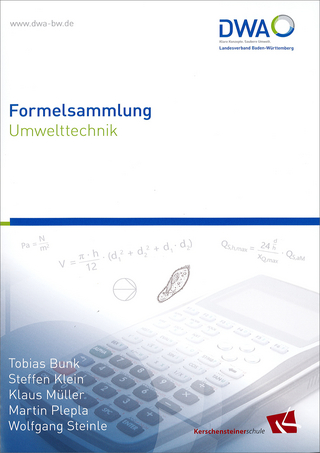
Advanced and Emerging Polybenzoxazine Science and Technology
Elsevier Science Publishing Co Inc (Verlag)
978-0-12-804170-3 (ISBN)
In the past twenty years, the number of papers on polybenzoxazine has continuously increased at an exponential rate. During the past three years, the number of papers published is more than the previous 17 years combined. The material is now part of only a few successfully commercialized polymers in the past 35 years. Therefore, interest in this material in both academia and industry is very strong.
Professor Ishida has been a pioneer in the molecular characterization of composite interfaces. His activity extends to synthesis, surface vibrational spectroscopy, and rheology and processing of composite materials. He has also pioneered the development of new, very versatile polymers called polybenzoxazines. Professor Ishida received the following awards among others: The Global Salute to Polymers Award (The American Chemical Society); The Alexander von Humboldt Award for Senior Scientist, Humboldt Foundation, Germany, Oct. (1999); Eminent Scientist, Institute for Physical and Chemical Sciences (RIKEN:Japan); Award for Excellence in Adhesion Research, The Society of Adhesion; and The International Research Award, Society of Plastic Engineers (SPE). He is both SAMPE Fellow and SPE Fellow. He has been the coordinator for establishing a graduate college in polymers and petrochemistry at Chulalongkorn University, Bangkok, Thailand, in the past 20 years. He has 11 edited and translated books, 40 disclosures and patents, and over 440 papers to his credit. His H-index is 63 with total citations of more than 13,000 (as of 09/18/2014). He is a member of the editorial board of “The Journal of Adhesion, “Journal of Nanostructured Polymers and Nanocomposites, “Polymers, “Journal of Materials, “International Research Journal of Pure and Applied Chemistry, “Austin Journal of Nanomedicine & Nanotechnology, “International Journal of Nano Studies & Technology, “International Research Journal of Pure and Applied Chemistry, and “Recent Patents on Materials Science, and Editor-in-Chief of "Composite Interfaces," and Associate Editor of “Polymers and Polymer Composites as well as “Frontiers: Composite Materials. Pablo Froimowicz is the Head of the Design and Chemistry of Macromolecules Group at the Institute of Technology in Polymers and Nanotechnology (ITPN), UBA-CONICET, School of Engineering, University of Buenos Aires, Buenos Aires, Argentina. His original background is on Organic Chemistry, although he quickly developed big interests in the area of Polymer Science where he was, in time, awarded a Ph.D. in Chemical Sciences by the National University of Cordoba, Argentina, under supervision of Prof. Dr. Miriam Strumia, and a Ph.D. in Materials Science and Engineering by the Grenoble Institute of Technology, France, supervised by Prof. Dr. Alessandro Gandini followed by Prof. Dr. Naceur Belgacem. Pablo then moved to Toronto as a postdoctoral fellow at the University of Toronto, Canada, where he was directed by Prof. Dr. Mitchell A. Winnik, working on synthesis of specifically designed monomer and polymer as well as in micellization processes. Next, and interested in polymeric nanoparticles, Pablo joined Director Prof. Dr. Katharina Landfester’s research group at the Max Planck Institute for Polymer Research, in Mainz, Germany. There, he had also the opportunity to combine disciplines and work on the design and synthesis of responsive materials and nanomateriales toward different applications. Dr. Froimowicz then spent a sabbatical at the Grenoble Institute of Technology, France, where his interest in revalorization of natural renewable materials and sustainability was renewed. Prof. Froimowicz has been and is editor of different journals in the areas of general chemistry, organic chemistry, responsive materials, and polymer science. Since 2015 Dr. Froimowicz is a regular Visiting Associate Professor in the Department of Macromolecular Science and Engineering at Case Western Reserve University (CWRU), working with Prof. Dr. Hatsuo Ishida.
Part I: Synthesis and Properties of Benzoxazine Resins 1. Various Synthetic Methods of Benzoxazine Monomers 2. Catalytic Accelerated Polymerization of Benzoxazines and Their Mechanistic Considerations 3. Molecular Designs of Benzoxazines With Enhanced Reactivity Based on Utilization of Neighboring-Group Participation and Introduction of Thioether Moiety 4. Development of New Generation Benzoxazine Thermosets Based on Smart Ortho-Benzoxazine Chemistry 5. Tailoring Polybenzoxazine Chemical Structure: Synthetic Approaches to Flexible Systems 6. 3,4-Dihydro-1,3-2H-Benzoxazines: Uses Other Than Making Polybenzoxazines 7. Symmetric Versus Asymmetric di-Bz Monomer Design: Structure-to-Properties Relationship
Part II: Physical and Chemical Properties of Cross-linked Polybenzoxazines 8. Modern Developments Using Molecular Simulation to Predict the Physical and Mechanical Properties of Polybenzoxazines 9. Predictive Methodology and Properties of Polybenzoxazines 10. Properties Enhancement Obtained in Anhydride-Modified Polybenzoxazines: Effects of Ester Functional Group on Polybenzoxazine Network 11. Thermal Degradation Mechanism of Polybenzoxazines 12. Mediated Surface Properties of Polybenzoxazines
Part III: Application of Advanced Organic Synthesis for Benzoxazine Resins 13. Thiol-Benzoxazine Chemistry for Macromolecular Modifications 14. Boron-Containing Benzoxazine Resin 15. Structures of Metal-Complex Polybenzoxazines and Effect of Metal Ions on the Polymerization, Degradation, and Catalysis 16. Development of Phosphorus-Containing Polybenzoxazines
Part IV: Polybenzoxazine Blends and Alloys 17. Benzoxazine/Cyanate Ester Alloys 18. Polybenzoxazine/Bismaleimide Alloys 19. Arylacetylene-Derived Resins and Functional Benzoxazines 20. Polybenzoxazines Derived from Nitrile- and Phthalonitrile-Functional Benzoxazines and Copolymers from Benzoxazine/Phthalonitrile Resin Mixtures 21. Fluorene-Based High Molecular Weight Benzoxazine Blends 22. Polybenzoxazine/Organosiloxane
Part V: Biobased Polybenzoxazine Materials 23. Polybenzoxazine Materials From Renewable Diphenolic Acid 24. Cardanol-Based Benzoxazines and Their Applications 25. Lignin-Based Phenols: Potential Feedstock for Renewable Benzoxazines 26. Chitin- and Shell-Based Benzoxazines 27. Eugenol-Based Polybenzoxazines 28. Furan-Based Benzoxazines
Part VI: Morphological Control of Polybenzoxazines 29. Reaction-Induced Phase Separation of Benzoxazine Blends 30. Precision Thermoset-Spherical Nano- and Microparticles Formation in Nanoconfinement: A Model Case From Benzoxazine Polymerization in the Blend System With Aromatic Containing Thermoplastic Resin 31. Polybenzoxazine for Hierarchical Nanoporous Materials 32. Nanostructured Carbons and Related Materials Derived From Polybenzoxazine-Based Polymers 33. Polybenzoxazine-Based Nanofibers by Electrospinning 34. HCl-Catalyzed Polymerization of Benzoxazine and Chemical Transformations Along Pyrolysis to Microporous Carbons
Part VII: Polybenzoxazine Composites, Hybrid Materials, and Nanocomposites 35. Hard Armor Composites From Ballistic Fiber-Reinforced Polybenzoxazine Alloys 36. Polybenzoxazine/Carbon Nanotube Composites 37. Recent Progress in Polybenzoxazine/POSS Hybrid Materials 38. Polybenzoxazine Nanocomposites: Case Study of Carbon Nanotubes 39. Polybenzoxazine-Based Organic-Inorganic Nanohybrid Materials for High Performance Engineering Applications 40. Polybenzoxazine-Clay Nanocomposites 41. Ceramic-Based Polybenzoxazine Micro- and Nanocomposites 42. Preparation of Mechanically Flexible Composites Composed of Polybenzoxazine—Linear Low-Density Polyethylene—Fumed Silica and Study of Their Properties
Part VIII: Polybenzoxazine Applications and Potential Applications 43. Benzoxazines in Proton Exchange Membrane Fuel Cells 44. Polybenzoxazine-Based Self-Lubricating and Friction Materials 45. Hybrid Polybenzoxazine Nanocomposites for Low-k Dielectrics 46. Polybenzoxazine-Based Coatings for Corrosion Protection 47. Polybenzoxazines as Self-Healing Materials 48. Shape Memory Polymers From Polybenzoxazine-Modified Polymers
Part IX: Benzoxazine Resin Preparation and Spectra 49. Preparation of High Purity Samples, Effect of Purity on Properties, and FT-IR, Raman, 1H and 13C NMR, and DSC Data of Highly Purified Benzoxazine Monomers
| Erscheinungsdatum | 10.02.2017 |
|---|---|
| Sprache | englisch |
| Maße | 216 x 276 mm |
| Gewicht | 2420 g |
| Themenwelt | Technik ► Umwelttechnik / Biotechnologie |
| ISBN-10 | 0-12-804170-6 / 0128041706 |
| ISBN-13 | 978-0-12-804170-3 / 9780128041703 |
| Zustand | Neuware |
| Haben Sie eine Frage zum Produkt? |
aus dem Bereich


